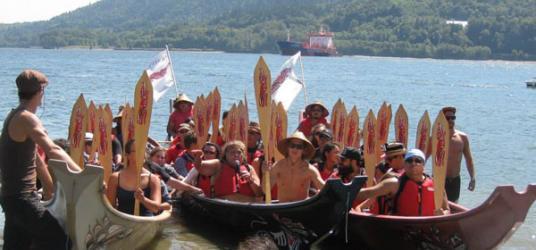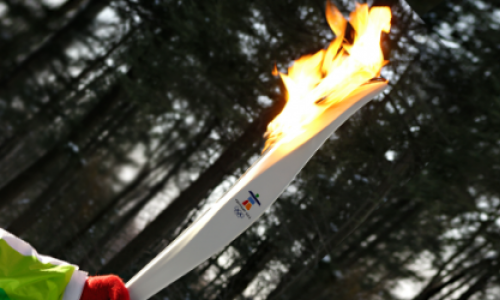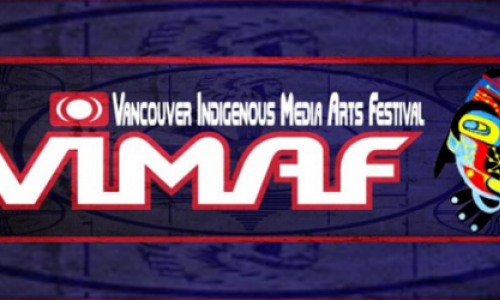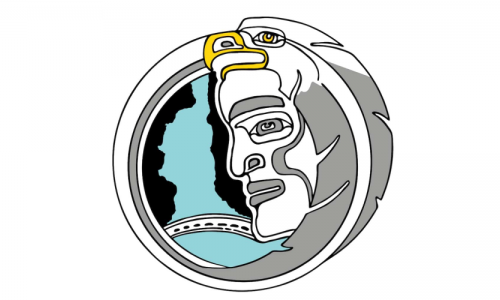
Introduction
The Tsleil-Waututh people of the Burrard Inlet, with the purpose of stopping the Kinder Morgan pipeline expansion, created the Sacred Trust Initiative (STI). This case study will outline historical occurrences of conflict surrounding the Tsleil-Waututh Nation (TWN), in order to examine how the Sacred Trust came to be, and how it is positioned within this culture of negotiation.
As well as building a timeline of negotiation surrounding the TWN, this case study will include interviews conducted with member’s, friends and allies of the STI in order to reflect on the impact this conflict is having on the people themselves and future negotiations.
Timeline of Negotiation
The emergence of Tsleil-Waututh Sacred Trust Initiative reflects the evolution of the nation itself. Its creation and the subsequent action taken to stop the Kinder Morgan (KM) pipeline expansion as well as the legal challenge against the National Energy Board (NEB) has great implications regarding the TWN and its position as a sovereign nation with the ability and the desire to exert the rights associated with sovereignty. The STI stands on the foundation of all instances of negotiation that came before it. It gained its strength from this history, therefore the timeline that follows will highlight significant negotiations between the TWN and various other parties.
“Prior to 1992: No formal economic development activity carried out by the Tsleil-Waututh First Nation (TWN). In this period TWN leaders were preoccupied with issues of basic community survival, including the provision of public utilities and new housing to TWN members.”
1992: Establishment of Takaya Developments, Inc.
-
Chief Leonard George engaged in partnership discussions with the Hong Kong-based Kuok family and with Mr Loong Keng Lim.
-
New partners identified 95-acres of Barrardview IR#3 for development.
-
Planning for a multi-phase development known as “Raven Wood” began.
-
June 24, 1992, formal agreement signed between TWN and 3678 Investment Limited for the undertaking of construction projects
-
First partnership for the development began in January 1993 and dissolved in June 19999. A community vote was held and nine separate phases of leasehold projects completed.
-
June 1999, partnership agreement revised
-
To early 2002, Takaya Devlopments, Ltd. constructed 629 condo units
-
From 1994 to 2002, cash distribution includes:
— aboriginal rights and legal challenges
— profit sharing
— community hall construction
— lacrosse box construction
— Takaya Tours financing
— Gathering Place Restaurant financing
— education and social assistance programming
— community store
— business research and project development exercises
Treaty Negotiations:
-
Stage 1: TWN Statement of Intent, February 18, 1994
-
Stage 2: Readiness documents accepted as complete, August 02, 1995
-
Table declared ready, August 29, 1995
-
Tripartite Procedural Agreements signed, TWN Openness Protocol, February 07, 1996
-
Stage 3: Framework Agreement signed, August 15, 1996
-
Stage 4: Present
1998: January 16, Co-Management Relationship in Action. Say Nuth Khaw Yum Heritage Park/Indian Arm Provincial Park. TWN and BC agreed to co-manage the park as equal partners.
2001: Cates Park/Whey-ah-Wichen Protocol/Cultural Agreement between the District of North Vancouver and the TWN.
2003: Open Protocol agreement between TWN and Canada and British Columbia on March 27.
2004: The Four Host First Nations signed a protocol agreement to work together in order to showcase their culture and traditions in the 2010 Olympics.
Approximately 2004: TWN collaborated with British Columbia’s Ministry of Environment as part of the Lower Mainland Elk Recovery Project.
2005: TWN and British Columbia signed a partnership agreement for the collaborative development of an Integrated Land and Resource Management Plan in December.
2006: 20 elk from the Sunshine Coast were released.
2006: On December 5, Tsleil-Waututh Nation and BC Parks held the BC Protected Areas Research Forum. TWN create the first British Columbian Bioregional Inventory Atlas
They discussed:
-
the TWN
-
co-management partnership in action
-
bioregional inventory atlas
2007: The Framework Agreement of First Nation Land Management signed by Minister of Indian Affairs and Northern Development and 13 First Nations on February 12, 1996 and was ratified on June 17, 1999 by the enactment of the First Nations Lands Management Act. TWN added as a signatory, which resulted in the creation of the TWN Land Code in February.
2009: July 30, TWN and Port Metro Vancouver Sign Protocol Agreementin order to formalize the co-operative relationship that exists between the Nation and the Port.
2010: Established the Park Management Plan (Say Nuth Khaw Yum/Indian Arm Provincial Park), February.
2010: Endurance Wind Power announces their partnership with TWN to bring renewable energy to First Nations and Indigenous groups across North America, on February 21st.
2011: Memorandum of Understanding signed between TWN and Run of River Power outlining relationship. A Key Principles Agreement was signed as well, which states the roles and relationships, identifies and defines opportunities that be advanced corporately and acts as a guide to the development of a Social and Economic Benefits Agreement.
2011: TWN and Forest & Range sign Consultation and Revenue Sharing Agreement on March 13.
2014: TWN’s first elk hunt in 125 years.
2014: Musqueam, Squamish and Tsleil-Waututh sign Protocol Agreement related to equal benefit sharing arising from crown land sales occurring within the Nation’s shared territories.
Present: The Tsleil-Waututh Nation, along with the Department of Fisheries and Oceans, are undertaking habitat restoration in the Indian River watershed.
Kinder Morgan Trans Mountain Pipeline Expansion Project
Approximately 2010/2011:
-
Rueben George approaches chief and council to discuss rumours that Kinder Morgan was going through the tolling application. What that meant is that Kinder Morgan was establishing sellers for their product. The rumours included an increase of tanker traffic in the Burrard Inlet.
-
Chief and Council agree to oppose the expansion. At this time it was not even referred to as a project.
-
Organized a dinner where Rueben George and Gabe George presented their research to the nation. They presented potential benefits associated with the expansion to the nation, as well as the risks.
-
Of those in attendance, the vote was 100% against the expansion.
-
Chief and Council and technical professionals go on retreat to strategize. They created the Sacred Trust Initiative mandated to oppose and stop the Kinder Morgan Trans Mountain Pipeline Expansion.
2012: TWN requests to participate in the Hearing Order as Intervenor on the Approval of the Approval of the Transportation Service and Toll Methodology For the Expanded Trans Mountain Pipeline System, filed by Kinder Morgan.
2014: TWN launches legal challenge of the National Energy Board’s review of Kinder Morgan expansion project on May 2.
2014: TWN granted permission to pursue its legal challenge against the National Energy Board’s review of Kinder Morgan Trans Mountain Pipeline Expansion on July 10.
Evolution of Negotiation
Upon reviewing the Tsleil-Waututh’s timeline of negotiation, it is clear that the fundamental difference between previous negotiations and the advent of the Sacred Trust Initiative is the clear statement of opposition. The TWN is a progressive and innovative nation that works toward economic and community development for their nation in a way that reflects their culture and traditions, while also supporting the economic needs of their membership. The agreements and partnerships that have taken place over several decades establish a working relationship between the TWN and various partners for the purpose of mutual benefit. Many of the agreements include dispute resolution processes in the case of disagreements, but for the most part, the agreements reflect an inherent desire of the TWN to establish themselves as a sovereign nation willing to work with various other parties, not against them by any means. Though negotiation processes of specific agreements may have faced conflict in varying degrees behind closed doors, what this timeline establishes is the TWN’s ability to forge relationships, partnerships and make compromises in order to position themselves as active participants in decision-making processes, both for their own nation and for citizens of British Columbia as well.
According to Rueben George, the TWN’s mandate is as follows:
-
Sacredness
-
Say ‘no’ to fossil fuel development—uranium, chlorine, coal (just in lower mainland)
-
Building partnerships
-
There are alternatives—“we say ‘no’ but there are good alternatives; solar panels, tesla car, green energy.”
The Sacred Trust Initiative stands alone in TWN’s negotiation history in its mandate as a force of opposition, which is, perhaps why its creation was necessary. Though it was created and is supported by the TWN, its goal differs from the culture of TWN negotiation that came before it. In the case of the pipeline expansion and for the Tsleil-Waututh people, there will be no negotiating with KM or the government. The STI draws a line in the sand and it is where the people say, ‘no’.
Sources
Alliance Meeting Notes. (2014, July).
Corporation of the District of North Vancouver. (2014). Cates Park/Whey-ah-Wichen Protocol Cultural Agreement. Retrieved July 2014, from North Van District: http://www.dnv.org/upload/documents/council_reports/215979b.pdf
ENDURANCE PARTNERS WITH TSLEIL-WAUTUTH NATION FOR CLEAN POWER FUTURE. (2011, February 21). Retrieved July 2014, from Endurance Wind Power: We Power the Future: http://www.endurancewindpower.com/2011/02/endurance-partners-with-tsleil-waututh-nation-for-clean-power-future/
George, C. J. (2012, October 12). Business Correspondence Document. Retrieved July 2014, from Regulatory Document Index: https://docs.neb-one.gc.ca/ll-eng/llisapi.dll/fetch/2000/90465/92835/552980/954292/828580/866026/874118/D14-2_-_Intervention_-_A3C3J5.pdf?nodeid=874212&vernum=-2
Joseph, S. A.-i.-c. (1995-2014). Four Host First Nations. Retrieved July 2014, from Treaty 7 Management Corporation: http://www.treaty7.org/files/SeanAtleoLetter-eng.pdf
Lower Mainland Roosevelt Elk Recovery Project. (2008, June). Retrieved July 2014, from BC Hydro For Generations: https://www.bchydro.com/bcrp/projects/docs/bridge_river/07.W.SFN.02.pdf
News Release: First Nations sign Protocol Agreement, acquire land. (2014, March 27). Retrieved July 2014, from The Government of British Columbia: http://www2.news.gov.bc.ca/news_releases_2013-2017/2014MTICS0004-000385.htm
Not Just Another Pretty Map, BC Protected Areas Forum. (2006). Retrieved 2014, from University of Northern British Columbia: http://www.unbc.ca/assets/bc_protected_area_research_forum/conferences/bcparf_twn_
atlaspresentation_dec_4_06.pdf
Openness Protocol. (n.d.). Retrieved July 2014, from BC Treaty Commission: The independent facilitator for treaty negotiations: http://www.bctreaty.net/nations/agreements/tsleil_openness.pdf
Park Management Plan. (2014). Retrieved July 2014, from Tsleil-Waututh Nation: The People of the Inlet: http://www.twnation.ca/en/About%20TWN/Stewardship/~/media/Files/SNKY_
Stewart, E., (2011). Run of River, Skookum Creek Power Project (09-110). Retrieved June 2014, from Tsleil-Waututh Nation: http://squamish.cc/extranet/Planning/Referrals/Skookum%20Clean%20Energy%20Project
/EXHIBITS/Ex%20%2020.%20%20TWN%20Letter%20to%20NRO/TWN%20Letter%20to%
SUMMARY OF Tsleil-Waututh Nation Land Code. (2007, February). Retrieved June 2014, from Tsleil-Waututh, The People of the Inlet: http://www.twnation.ca/en/government/departments/~/media/Files/Land%20Registry/summary
Takaya Developments, Ltd. (n.d.). Retrieved July 2014, from Tsleil-Waututh Economic Development Department: http://www.twnecdev.com/twned2-dev.htm
Tennant, Z., & Hinchey, G. (2014, April 14). First elk hunt in 125 years for Tsleil-Waututh Nation. Retrieved July 2014, from CBC News: http://www.cbc.ca/news/aboriginal/first-elk-hunt-in-125-years-for-tsleil-waututh-nation-1.2605591
Tennant, Z., & Hinchey, G. (2014, April 14). First elk hunt in 125 years for Tsleil-Waututh Nation. Retrieved July 2014, from CBC News: http://www.cbc.ca/news/aboriginal/first-elk-hunt-in-125-years-for-tsleil-waututh-nation-1.2605591
Thomas, C., (2014, July). (C. Coolidge, Interviewer)
Tsleil-Waututh Nation. (2009). Retrieved July 2014, from BC Treaty Commission: The independent facilitator for treaty negotiations: http://www.bctreaty.net/nations/tsleilwaututh.php
Tsleil-Wauthuth Nation Forest and Range Consultation and Revenue Sharing Agreement. (2011, March 13). Retrieved July 2014, from The Province of British Columbia: http://www2.gov.bc.ca/assets/gov/topic/9EFBD86DA302A0712E6559BDB2C7F9DD/agreements
Tsleil-Waututh Nation and Port Metro Vancouver Sign Protocol Agreement. (2009, June 30). Retrieved July 2014, from CNW A PR Newswire Company: http://www.newswire.ca/en/story/404901/tsleil-waututh-nation-and-port-metro-vancouver-sign-protocol-agreement
Watson, A., (2014, July 25). Tsleil-Waututh start watershed work. Retrieved July 2014, from north shore news: http://www.nsnews.com/news/tsleil-waututh-start-watershed-
















